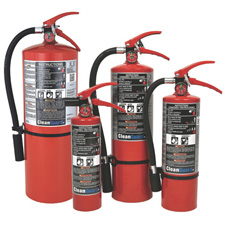| The Home page of ILPI's Safety Data Sheet (SDS) Resource, the leader in SDS information since 1995! | |
| The history and philosophy behind this resource. | |
| A curated collection of books and reference materials concerning Safety Data Sheets and closely related topics. | |
| Paste your plain text SDS into the SDS-Demystifier, and it will be converted into a hypertext-enriched document with links to detailed explanations of each key term. | |
| An extensive list of frequently asked questions about Safety Data Sheets including regulations, content, compliance, and more. | |
| A humorous take on Safety Data Sheet jargon. Fill in the blanks on our entry form to generate a personalized Unsafety Data Sheet to share with your coworkers. | |
| Since 1995, we've maintained this massive curated list of the best places to find Safety Data Sheets on the Internet. | |
| Way more than a glossary, this hypertext-enhanced resource covers hundreds of SDS-related terms and expert knowledge. Each entry includes both the SDS relevance and links to additional authoritative resources. | |
| Archived results of Safety Data Sheet related polls taken by some of our millions of site visitors | |
| You are here! The OSHA regulations behind SDS regulations, including the inspection guidelines and over 400 official interpretations letters under the Hazard Communication Standard | |
| Commercial suppliers of SDS authoring and management software as well as cloud compliance services. | |
| Commercial companies that will create SDS's for your specific needs as well as SDS translation companies. |

Safety signs, banners, and scoreboards? Get yours at Safety Emporium!
| Title: 10/29/2020 - OSHA standards applicable to medical and safety uses of pure nitrogen gas | |
| Record Type: Interpretation | Standard Number: 1910.101, 1910.1200, 1910.1450 |
OSHA requirements are set by statute, standards and regulations. Our interpretation letters explain these requirements and how they apply to particular circumstances, but they cannot create additional employer obligations. This letter constitutes OSHA's interpretation of the requirements discussed. Note that our enforcement guidance may be affected by changes to OSHA rules. Also, from time to time we update our guidance in response to new information. To keep apprised of such developments, you can consult OSHA's website at https://www.osha.gov.
October 29, 2020

Protect sensitive electronic and laboratory equipment with Ansul CleanGuard+ extinguishers from Safety Emporium.
Ms. Denyse C. DuBrucq, EdD
CryoRain, Inc.
2300 Eden Lane
Dayton, OH 45431-1909
Dear Ms. DuBrucq:
Thank you for your email to the Occupational Safety and Health Administration (OSHA). You have requested OSHA, among other federal agencies, evaluate the use of your products that deliver pure nitrogen gas clouds for a variety of applications, such as fire suppression.
Your email expressed that some medical and safety uses of pure nitrogen are under research by your company. You also assert that because OSHA and other federal agencies have classified nitrogen gas as a simple asphyxiant, your marketing and research opportunities have been limited.
Please note OSHA does not register, certify, approve, or otherwise endorse commercial products. However, the agency can clarify the application of health and safety standards to particular facts, as summarized below.
As you know, nitrogen has an inherent hazard of being a simple asphyxiant, and if not used properly in certain workplace applications, workers may be injured or killed. In accordance with the Occupational Safety and Health Act of 1970, OSHA has a mandate to regulate hazards in the workplace. While OSHA has no specific standard for nitrogen, we have a number of standards that govern its use in the workplace, including the duty to inform employees using nitrogen of hazards and safe use. For your information, below is a list of OSHA standards and guidance related to protecting workers from the known hazards of nitrogen.
- OSHA Standard, 29 CFR § 1910.1200, Hazard Communication, available at www.osha.gov/laws-regs/regulations/standardnumber/1910/1910.1200; contains requirements for labeling of containers, availability of safety data sheets, and training for workers on the hazards associated with chemicals, including nitrogen;
- OSHA Standard, 29 CFR § 1910.1450, Occupational Exposure to Hazardous Chemicals in Laboratories, available at www.osha.gov/laws-regs/regulations/standardnumber/1910/1910.1450; contains requirements on laboratory use and scale for workers using hazardous chemicals in a laboratory setting, including nitrogen;
- Standard, 29 CFR § 1910.101, Compressed Gases, available at www.osha.gov/laws-regs/regulations/standardnumber/1910/1910.101; contains requirements for safe handling and use of compressed gases, including nitrogen;
- OSHA Publication, Laboratory Safety: Cryogens and Dry Ice Quick Facts (OSHA 3408 - 2011), available at www.osha.gov/Publications/laboratory/OSHAquickfacts-lab-safety-cryogens-dryice.pdf; contains precautions for safe handling and use of liquid nitrogen; and
- OSHA Letter of Interpretation, Guidance on whether an inert gas in the non-compressed state represent hazardous chemicals under the Hazard Communication Standard, January 25, 1995, available at www.osha.gov/laws-regs/standardinterpretations/1995-01-25; contains clarification of OSHA 's classification of nitrogen/other inert gases as hazardous in the context of the Hazard Communication Standard, 29 § 1910.1200.

Get your GHS-compliant labels and signs from Safety Emporium.
Thank you for your interest in occupational safety and health. I hope you find this information helpful. OSHA 's requirements are set by statute, standards, and regulations. Letters of interpretation do not create new or additional requirements but rather explain these requirements and how they apply to particular circumstances. This letter constitutes OSHA 's interpretation of the requirements discussed. From time to time, letters are affected when the agency updates a standard, a legal decision impacts a standard, or changes in technology affect the interpretation. To assure that you are using the correct information and guidance, please consult OSHA 's website at https://www.osha.gov. If you have further questions, please contact the Office of Health Enforcement at (202) 693-1890.
Sincerely,
Patrick J. Kapust, Acting Director
Directorate of Enforcement Programs
The original official public domain version of this document is available from OSHA at https://www.osha.gov/laws-regs/standardinterpretations/2020-10-29.